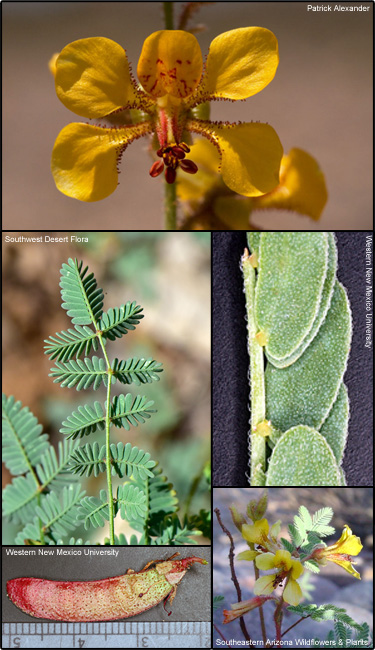Pignut (Hoffmannseggia densiflora)
 Common Names: Hog potato, shoestring weed, Indian rushpea
Common Names: Hog potato, shoestring weed, Indian rushpeaDescription: Considered a noxious weed in the state of Kansas.
Habit: Perennial herb, growing up to 1 ft. with creeping rhizomes.
Leaves: Green; bipinnate, 4-13 leaflets; glabrous or minutely pubescent.
Stems: Erect, reaching a height of 1 foot or less.
Flowers: Yellow with orange and red; inflorescence a raceme found above leaves; glandular flowering stalk, 5 petals, spreading; not radially symmetrical.
Fruit and seeds: Pods flattened, oblong, straight to slightly falcate (hooked), 2-4 cm. long and 5-8 mm. wide, deciduous, contains several seeds.
Habitat: Native to North America. Can be found forming large colonies in disturbed sites, roadsides and fields.
Reproduction: By seed and deep, creeping rhizomes.
Credits: The information provided in this factsheet was gathered from SEINet Arizona - New Mexico Chapter and Southwest Desert Flora.
Individual species images that appear with a number in a black box are courtesy of the Bugwood.org network (http://www.invasive.org). Individual photo author credits may not be included due to the small display size of the images and subsequent difficulty of reading the provided text. All other images appear courtesy of Google (http://images.google.com).
